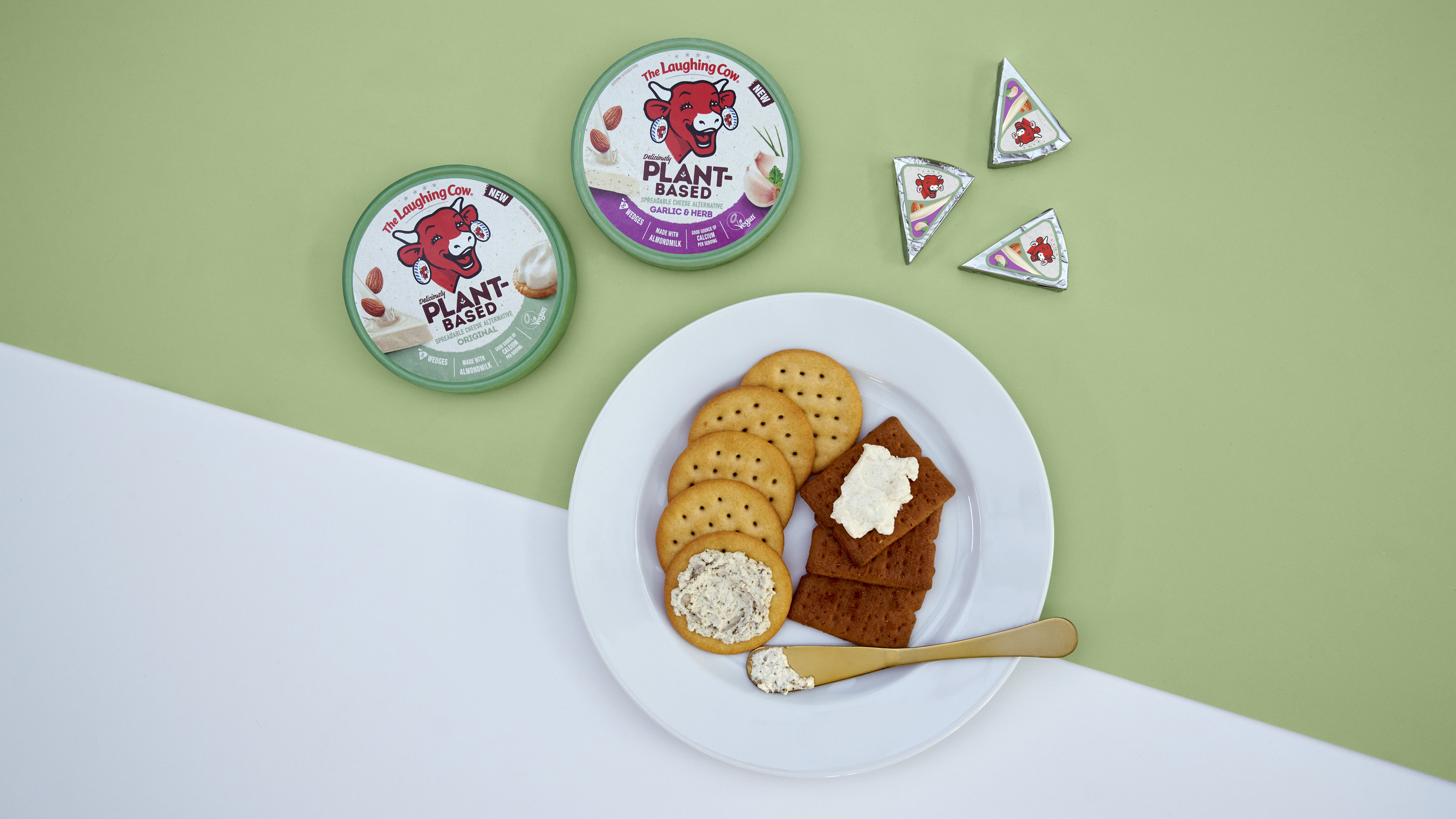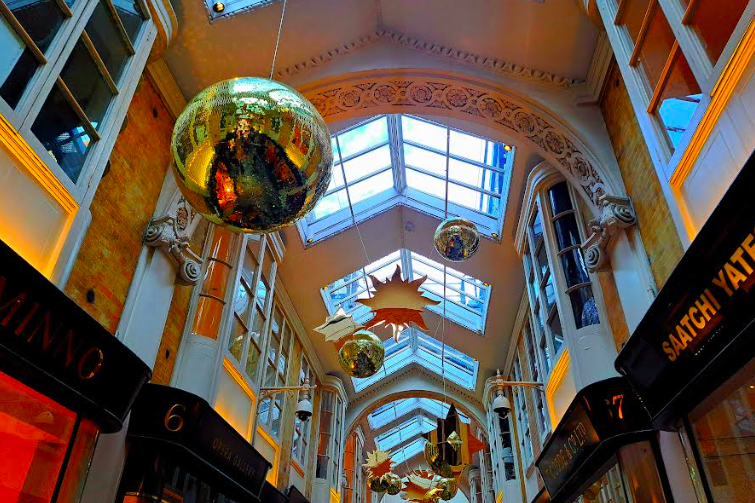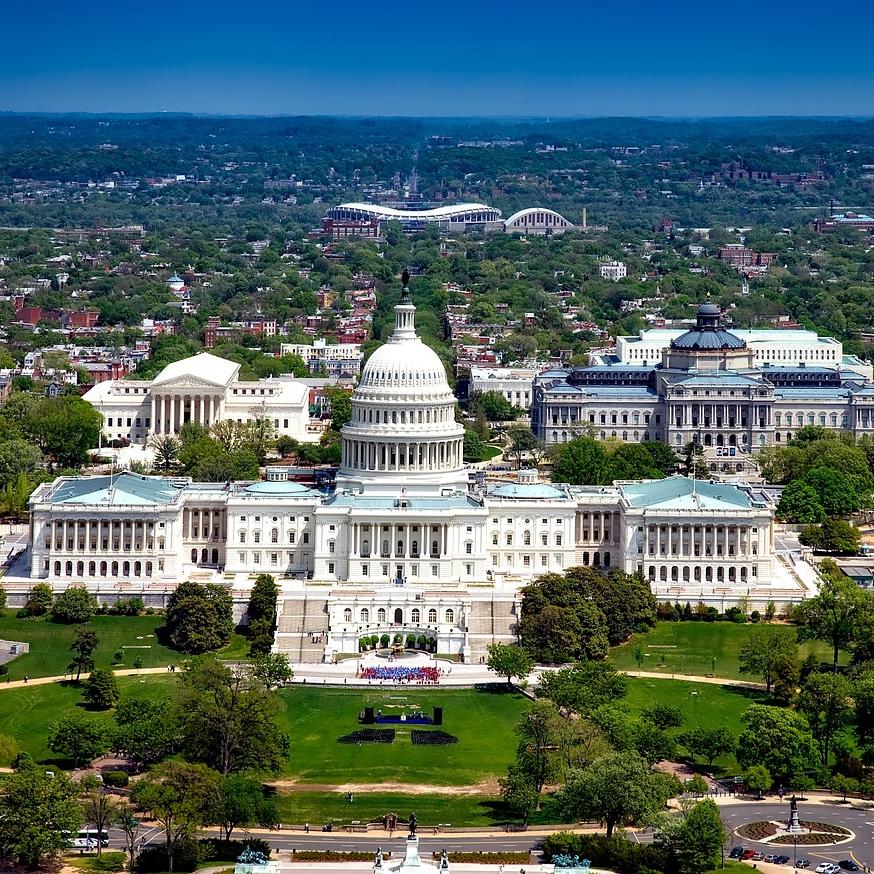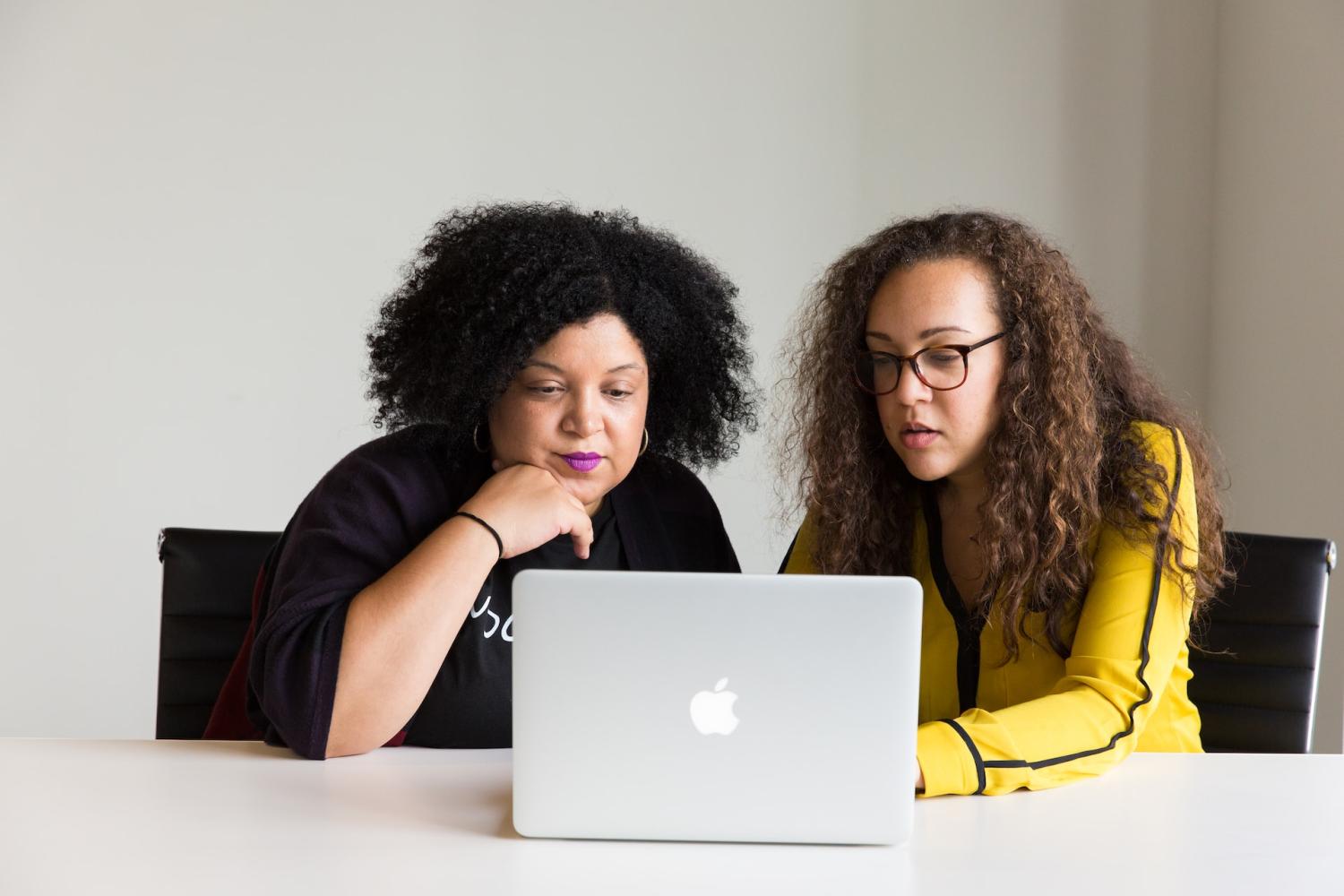From the Ground Up: How Companies Can Help Drive Financial Inclusion


Join Merck KGaA, CNote and 3BL Media this Wednesday, December 14 at 1 p.m. ET to learn more about how businesses can use an innovative model to expand financial inclusion and meet their DEI targets.
Across the U.S., limited access to financial services continues to hold back many citizens, especially people of color. As companies look to invest in the communities in which they do business, efforts to improve financial inclusion can have a positive impact through generating small business growth, expanding affordable housing and offering more opportunities for individuals to build income and wealth.
In a recent example of this model in action, science and technology company Merck KGaA, Darmstadt, Germany, made a $20 million investment this fall with CNote, a women-led impact investment platform. The investment will provide capital to support BIPOC-owned (Black, Indigenous, and people of color) and women-led small businesses, thereby bolstering economic growth and opportunity.
To learn more, join Jeffrey Whitford, Head of Sustainability and Social Business Innovation for the Life Science business sector of Merck KGaA, Darmstadt, Germany, CNote CEO Catherine Berman, and TriplePundit’s senior editor, Mary Mazzoni, on Wednesday, December 14 at 1 p.m. ET/10 a.m. PT/6:00 p.m GMT as they discuss this beneficial partnership and how other businesses can apply this novel model to meet their diversity, equity and inclusion goals. Register for this free webcast here.
CNote has had an impressive track record at deploying investor funds into deposit and loan products at community financial institutions (CFIs) Across the U.S., CFIs have been crucial in serving small businesses owned by women and people of color, fund affordable housing, and support other forms of economic inclusion. Merck KGaA Darmstadt, Germany’s investment targets U.S. regions where the company has substantial operations, including Arizona, California, Maryland, Massachusetts, Missouri, New Hampshire, Ohio, Pennsylvania, Texas, Washington and Wisconsin.
The focus on community financial institutions with a proven track record of serving the under-resourced has big potential for positive impact — and offers valuable lessons other business leaders can apply as they look to build tangible investment programs with comprehensive social impact reporting.
With that said, be sure to join us this coming Wednesday.
Image credit: Unsplash
'Best-of-Breed’ Sustainability Software May Be The Worst Solution


There is no easy road to meeting corporate sustainability goals. But many companies are inadvertently making that work harder on themselves by looking at the challenge in silos.
Is best-of-breed sustainability software holding your company back?
Companies often rely on so-called "best-of-breed" technologies when managing their operations and value chains. Best-of-breed refers to individual technical solutions that are very good in their specific area, based on customer reviews and technical ratings.
The problem with these applications, when it comes to corporate sustainability management, is that best-of-breed solutions often cannot easily share data with one another, so they are not fully optimizing that data across operations and supply chains. Further, sustainability data is often not integrated with critical business functions, such as procurement, finance, and human resources departments.
Because of this incomplete and disconnected sustainability data, executives are unable to achieve a truly sustainable operating model . In fact, a recent SAP Insights Study indicates that about 70 percent of CEOs find it challenging to measure environmental, social and governance (ESG) data across their company’s value chains.
“The financial and non-financial data is disconnected, stored in spreadsheets, not updated from real-time systems, and not easily shared within the company, with other applications, or with partners such as upstream suppliers or downstream logistics providers,” Sebastian Steinhaeuser, chief strategy officer at the software company SAP, told TriplePundit.
Further, when it comes to things like carbon emissions tracking, best-of-breed solutions “often don’t connect with other sustainability data and applications” and need to use estimates from industry templates or other company functions. This “limits the ability to effectively manage and strategically steer a company’s overall, holistic sustainability transformation,” Steinhaeuser said.
“What [companies] need is real, actual data from their operations and supply chains,” he continued. “To get reliable Scope 3 emissions data, for example, we need more than averages. We need actuals.”
Why data matters for sustainability
Emissions from supply chains, known as Scope 3, can represent up to 90 percent of a company’s overall footprint, and these emissions are notoriously tricky to tackle because they often fall outside of a company’s direct control. Having real data rather than estimates can help facilitate reducing those emissions, as they become easier to pinpoint.
“With the lack of data transparency and enterprise-wide capabilities, it's no surprise that companies are struggling to scale and accelerate sustainability across their operations and supply chains,” Steinhaeuser told TriplePundit.
In order to adequately address their emissions and reach their climate goals, companies need to manage their sustainability key performance indicators like they manage their financial ones. That means taking a more holistic view of the sustainability challenges a company faces. “I hear consistently that increasing regulation combined with greater pressure from trading partners and consumers is driving a heightened focus on running a sustainable business,” Steinhaeuser said. “We’re seeing a greater integration of business strategy, digital transformation strategy and sustainability strategy. Companies are now realizing they need a holistic, enterprise-wide approach.”
Still, Steinhaeuser is concerned that many business leaders are aiming for regulatory compliance without taking the extra steps needed for the deeper sustainable business transformation that new technology solutions could afford. “Businesses say inadequate technologies explain their lack of progress in their ESG strategies,” he said. “What they need today is increased data transparency and collaboration to scale positive impact."
From best-of-breed to something better
In order for companies to act on their climate targets —and meet them — they need to have accurate data. “We believe companies are falling behind because they are unable to gain detailed visibility into the data they need,” Steinhaeuser explained. “And we know you cannot manage what you cannot measure.”
Companies are under increasing pressure from the public, investors, regulators, and their own boards to act aggressively on improving the sustainability of their operations and supply chains. The accuracy and transparency of sustainability data should match that of financial data, but for most companies, relying on separate, best-of-breed solutions means that is not happening.
SAP is one company that is trying to help businesses make better technology decisions when it comes to their sustainability data. “Businesses need applications that can integrate enterprise-wide data including the sustainability data in core processes, and also bring in external data from other applications, industry organizations and regulators, and run analysis on it to manage the business more sustainability and report progress more accurately,” Steinhaeuser told 3p. One example of this is the SAP Sustainability Control Tower, a platform that takes a holistic look at sustainability across a company’s value chain.
The SAP Sustainability Control Tower manages accurate, live data — which allows companies to move from averages to actuals, report their performance regularly, and comply with reporting frameworks and standards. “With accurate, transparent and advanced analytics reporting, companies can identify areas for action, simulate scenarios, and hit their sustainability goals to minimize waste, reduce carbon emissions and improve sustainable supply chain performance,” Steinhaeuser said.
The SAP Sustainability Control Tower also integrates with other sustainability tools the company offers, like the SAP Cloud for Sustainable Enterprises portfolio, which adds additional functionalities including carbon emissions management, waste and materials management for circularity, social responsibility, and so-called “people sustainability.”
SAP puts its money where its mouth is
Most Fortune 2,000 companies use SAP software, and nearly 90 percent of the world’s finance and goods flows interact with SAP systems. So, creating sustainability software tools for their client base fits squarely into SAP’s wheelhouse. But the company also utilizes the tools for its own house.
SAP is implementing the SAP Sustainability Control Tower throughout its own business to “create insights on the total economic, social, and environmental impact our organization has across a range of measures, and accelerate programs such as our net-zero emissions by 2030 implementation,” Steinhaeuser said. He said the tool will help the company improve their ESG data management and enable them to set more accurate metrics and use analytics and automation to improve their own sustainable operations and reporting.
Looking ahead, good data is key to accomplishing sustainability goals
The bottom line is that in order to meet increasingly ambitious sustainability goals, companies need to have accurate, transparent and holistic data, Steinhaeuser concluded.
“Unifying ESG data provides significant gains in capabilities and competitive performance,” he told us. “Companies can’t make sustainable business decisions using data they don’t have or can’t use.” Tools like the SAP Sustainability Control Tower can put that decision-making control in the hands of company executives, giving reassurance to customers, investors and regulators.
This article series is sponsored by SAP and produced by the TriplePundit editorial team.
Image credit: John Schnobrich/Unsplash
This Cow’s Laughing Now: Another Brand Rolls Out Plant-Based Cheese


Another popular cheesemaker has rolled out new plant-based cheese products, and just in time for those who wish to make a new year’s resolution to eat less animal-based foods. Last week on this side of the pond, France-based Bel Group announced that The Laughing Cow wedges will soon appear in milk-free form.
In addition, a plant-based cream cheese product under the Nurishh brand will make its debut on January 1.
Plant-based cheese has been in the midst of a particularly long journey when compared to how meat alternatives have performed. While some brands such as Miyoko’s Creamery deservedly have a strong fan following, other companies within this space have stumbled. The problems: a funky way of melting (some plant-based cheese products simply don’t, at all), an unappealing texture and, face it, there’s not a lot of nutrition in a food that’s mostly packed with potato starch and coconut oil.
The result is that it’s often easier to find a plant-based burger than a cow-free grilled cheese. Some fast-food and foodservice companies, such as McDonald’s, have given up on meat- and milk-free alternatives entirely for now here in the U.S.

But Bel Group may be onto something. The company felt confident enough after the rollout of the performance of its plant-based cheese alternatives that currently fall under the Babybel and Boursin labels. Its brands also have a strong following among consumers who turn to Bel Group’s products for school and work lunches and sorting out an appetizer platter on a whim. So, if you grew up with The Laughing Cow or are quick to reach for a sack of Babybel mini-rounds, considering a plant-based option isn’t too far of a stretch.
The company has engaged partners that are helping its brands chart a plant-based course. Recently, Bel Group bought a stake in Standing Ovation, a France-based company that has developed a precision fermentation process to make animal-free casein, a typically milk-based protein that is integral in cheesemaking. In addition, Bel Group has been working with Perfect Day, another food technology company that can recreate dairy proteins that are milk-free. Finally, Superbrewed Food provides its own brewing process for some of Bel Group’s products.
For those who have been quick to predict the demise of the plant-based food sector in the wake of the bad press surrounding some brands like Beyond Meat, here’s a gentle reminder: Food technologies like the ones with which Bel Group is partnering are still scoring impressive amounts of funding.
Image credits: BabyBel; Zoe Schaeffer via Unsplash
It’s Here! TriplePundit’s 2022 Sustainable Holiday Gift Guide


London, England, decked out for the holiday season
Whether you're wishing your loved ones holiday greetings in person or from a few time zones away, yet again we’ve got you covered with our annual sustainable holiday gift guide. From zero-waste options to gifts that give back and support local artisans, start checking off your holiday gift list with these suggestions that are fun and festive yet light on impact.
Buy local. Think pre-owned.
We say it every year: You’ll be hard-pressed to find more responsible and sustainable holiday gifts than items that already exist and would otherwise go to waste. Fortunately for shoppers seeking to avoid waste, a bevy of companies have embraced re-commerce and are making it seamless to shop secondhand without sacrificing style. Retailers like Patagonia and REI have a rich selection of pre-owned outdoor gear, while The North Face and Eileen Fisher have long been solid options for finding clothing and outerwear that are worthy of a second life. Don’t dismiss portals like Poshmark and, of course, Etsy if you’re patient — you could be surprised! Check out more of our favorite re-commerce shops here.
If you can't buy used, consider buying local. Many small businesses are still struggling after the pandemic, and all the chatter about inflation and a possible recession isn’t helping. Your support can offer them a lift.
Even if you're still avoiding in-person shopping, sources like Google Maps and Yelp make it a breeze to find nearby mom-and-pops with online shopping options. To support Black-owned businesses, which were especially hit hard during 2020 and 2021, directories like We Buy Black, Goodee and EatOkra can help guide your way.
![[Image credit: Aid2arg.org]](/sites/default/files/inline-images/Ukraine%20artists.png)
Ukrainian artists are creating gifts that give back
Almost 10 months after Russia invaded Ukraine, countless citizens are still facing hardships, whether they’ve stayed in their country or have moved abroad. Aid2Art Ukraine, an art show and campaign curated by humanitarian relief organization Alight, offers a way for holiday shoppers to give back while they find meaningful gifts — in this case limited-edition prints — for their loved ones. Half of the proceeds go to Alight’s programs that help support Ukrainian artists and others who work in the creative space. The other half goes to the artists participating in the program.
![[Image credit: Nopalera]](/sites/default/files/inline-images/nopalera.png)
Personal care products celebrating Mexico’s rich culture
If you’ve never tried nopales in Mexican dishes, you’re in for a vegan treat. But the cactus commonly found in northern Mexico and the southwestern U.S. is also a key ingredient in this line of personal care products like soaps and exfoliants. Sandra Valesquez, founder of the personal care brand Nopalera, touts the plant’s ability to hydrate skin and hair. She describes the cacti as “strong, resilient, beautiful, and has always been here.”
![[Image credit: Cozy Earth]](/sites/default/files/inline-images/cozy%20earth.png)
Bamboo-based apparel and linens that feel cozy and are sourced responsibly
Bamboo is renewable, sustainable and resilient, but not all bamboo-based products are necessarily sourced responsibly, and the quality, look and feel of textiles made from bamboo can vary. Cozy Earth strives to achieve both. The company says it's involved with the production process from the very start. The results are products free of chemicals that feel good to wear. We’ve tested out Cozy Earth’s soft, comfy and minimalist hoodies, joggers and socks. The brand’s bedsheets, a bamboo-linen blend, kept us cool in summer heat and warm in late fall temperatures hovering near freezing.
Price: Sheet sets starting at $144; tops at $46; set of 3 socks at $31.50
![[Image credit: Goalz]](/sites/default/files/inline-images/Goalz%20Chocolates.png)
If you're looking to support women-owned businesses, start with this chocolatier
Michelle Oten’s company, Goalz, checks all the boxes: She sources from farming co-ops in Ghana, Côte d’Ivoire, Cameroon, Indonesia and Brazil, where farmers have incorporated sustainable farming practices and don’t use forced or child labor. The brand's wafer-shaped chocolates have only three ingredients: cacao, prebiotic fiber and allulose, a sugar substitute that works for chocolate-lovers who prefer treats that are keto-friendly or low-carb. Unlike other sugar-free chocolates that have a waxy texture, Goalz’s chocolates taste rich — the eight- and 11-year-old who tested them out with us heartily approved.
![[Image credit: Greyston Bakery]](/sites/default/files/inline-images/Greyston%20Bakery.png)
Sweets that help people score a second chance in life
Greyson Bakery has long been a TriplePundit favorite. The brand's brownies are decadent enough to make an appearance in Ben & Jerry's ice cream flavors like Half Baked, and the social enterprise is also a trailblazer for open hiring. Having built its team without interviews, job applications or background checks, Greyston is now primarily staffed by people with criminal justice histories, as well as those experiencing homelessness, substance abuse issues or who, for whatever reason, have trouble finding steady work. The company is also running a promotion on its holiday brownie gift packages until December 11.
![[Image credit: Homeboy Industries]](/sites/default/files/inline-images/Homeboy%20Industries.png)
Another socially conscious brands that regularly makes our holiday gift guide list is Homeboy Industries. Operating under the motto "jobs not jails," the social enterprise offers employment, education and other services to former gang members after they are released from prison. Having worked with more than 100,000 people in its home city of Los Angeles since 1986, it now powers the Global Homeboy Network of more than 400 organizations committed to giving formerly incarcerated people a second chance. Cookies, cakes, granola and coffee are among the treats available this holiday season.
![[Image credit: Material Kitchen]](/sites/default/files/inline-images/Material%20Kitchen.png)
A set of recycled and renewable mixing bowls to brighten up the kitchen
In last year's holiday gift guide, we talked up a cult favorite cutting board from Material Kitchen. This year, we’re bowled over by these 20-inch mixing bowls, which keep to the brand’s minimal design. Made from 75 percent recycled plastic and 25 percent renewable sugarcane, the reBowl comes in four eye-catching colors. The New York City-based company is also focused on giving back. This year, the brand is donating a portion of sale proceeds to the Korean American Community Foundation, as well as supporting Heart of Dinner, which delivers meals to elderly Asian residents, and Drive Change, a nonprofit that provides formerly incarcerated people with training in the foodservice and hospitality sectors.
Price: $25 for one; $60 for three
![[Image credit: Avocado]](/sites/default/files/inline-images/Avocado.png)
Beauty rest, sustainably
Silk pillowcases and sleep masks have surged in popularity, as they are often praised for reducing hair breakage and preventing acne, premature wrinkles, puffiness and sleep creases on the face. For the beauty-lovers on your list, we’ve vetted a couple for you to consider.
Avocado’s silk pillowcase is made from 22-momme mulberry silk, a thinly-woven silk that works well for linens and clothing as it’s breathable and not too heavy. Its envelope enclosure design keeps the pillow inside so it doesn’t squish out during sleepytime, and it comes with a 100 percent organic certified cotton wash bag, which also makes it easy to bring along for a road trip.
![[Image credit: The Ethical Silk Company]](/sites/default/files/inline-images/The%20Ethical%20Silk%20Company.png)
The Ethical Silk Company has an eye mask and pillowcase set as well. The brand’s set is free of dyes, and its design is handmade by artisans who use block printing. The brand says its pillowcase can help prevent “bed-head” while helping your night cream to be absorbed by your skin, not into your linens.
![[Image credit: Allbirds]](/sites/default/files/inline-images/Allbirds.png)
Say goodbye to bulky sweatpants: Allbirds makes you feel like flying with its merino wool joggers
Merino wool is one of the more unheralded fibers out there — that is, if this lightweight, moisture-wicking material is sourced sustainably from a supplier who participates in one of the various certification programs. Allbirds is one such company that is always looking for more responsible materials for its athletic shoes and apparel. We’re fans of its latest line of joggers, which are made from a blend of merino wool, recycled nylon and lyocell. They are quick-drying, breathable, flattering and extremely comfortable.
![[Image credit: 8000Kicks]](/sites/default/files/inline-images/8000Kicks.png)
Waterproof hemp shoes with a cool backstory
Our awesome brand story of the year goes to 8000Kicks, a Portuguese brand founded by a grandmother-grandson duo. The brand’s Explorer V2 loafers are made from industrial hemp, are extremely lightweight and waterproof to boot (pardon the pun).
Between their strength, minimal weight and clean styling, they make a cool gift for anyone at all ages, including one of our editorial staffers' 82-year-old father who remembers way back in the 1960s when ganja (and face it, industrial hemp) emerged as a tempting, but illegal, forbidden fruit.
![[Image credit: Arlokea]](/sites/default/files/inline-images/Arlokea.png)
Jewelry from Black-owned businesses makes a statement
As they say, buying jewelry is an extremely personal decision. It’s also personal for artisans who make beautiful items time and again but don’t necessarily get the spotlight from the leading fashion publications. So, we’re shining some light after becoming smitten with Arlokea, a Black-owned business that uses sustainable materials and is fair trade. Plus the company partners with nonprofits in order to give back to local communities.
Stocking stuffers, from socks to shelves
Okay, you may need a huge stocking for some of these, but if you’re looking for space-saving ideas, start with the StoveShelf, a TikTok hack that’s become a seamless way to score more shelf space in a tiny kitchen. Reclaimed wood crates we stumbled upon visiting Etsy offer a sustainable option to store and stack all those stray items (like stockings), and EarthHero sells kits to create wall shelves with components made from bamboo chopsticks.
On the subject of stockings, Arvin Goods makes adorable socks out of thread derived from fabric scraps. If you've got a lot of polar fleece or synthetic fibers in your closet, this laundry bag from Guppyfriend helps reduce microplastic shedding. Revival designs calico belts derived from leather scraps. And finally, channel your inner Heartstopper character with a Fjällräven backpack or accessory made from traceable wood chips from Scandinavian forests.
Image credit: Leon Kaye
France Starts Banning Short-Haul Flights and Urges a Return to Travel by Rail


Nice Côte d'Azur Airport in the south of France, summer 2022
The European Commission (EC) has given France approval to ban in-country short-haul flights where alternative train options can get travelers to the same destination within 2.5 hours or less. The ban, a first in Europe, will initially be in place for three popular routes flying between Paris-Orly and Nantes, Lyon and Bordeaux. These flight routes will be banned for three years and then reassessed by the EC.
The EC scaled back France’s initial plan to ban eight short-haul flights after the Union of French Airports and Airports Council International challenged the measure when it was first introduced as part of France’s Climate Law in 2021. The Commission determined that five of the proposed flights — between Paris Charles de Gaulle and Bordeaux, Lyon, Nantes and Rennes as well as between Lyon and Marseille — could not be banned because they either lacked a proper 2.5 hour rail alternative or the rail options were unavailable early in the morning or late into the evening.
France takes aim at limiting private jets
The announcement coincides with France’s move to also crack down on flights on private jets. With the country’s ultra-rich making trips from Paris to the French Riviera a weekend routine, France is home to the highest number of private jet flights in Europe. The trips may be convenient for the travelers, but they’re costly to the environment.
A 2021 report from Transport & Environment revealed that private jets release 10 times more carbon emissions than passenger flights, and 50 times more than trains. Though passenger planes emit an inordinate amount of carbon, the burden is shared by their passengers. Trains remain the king of eco-friendly transport, consuming far less energy than flying and driving.
Why this change is a big deal … and could become an even bigger deal
France’s plan to cut most domestic flights may have been diluted by pressures from airline unions, but banning three popular trips still holds the potential to significantly have an impact on lowering carbon emissions. Every passenger exchanging an airline ticket for a seat on a train represents major energy and carbon savings.
Importantly, it can also signal to other governments — particularly in Europe where train lines are expansive — that short-haul flight bans can be an effective way to curb carbon emissions. The adoption of such policies and laws from France’s neighbors would inch the European Union closer to achieving its Fit for 55 goals, an E.U. mandate to reduce greenhouse gas emissions by 55 percent or more by 2030.
Policies limiting other short-haul flights would also offer Europe the chance to flaunt its unrivaled train network. France’s high-speed rail options are far from unique in Europe: the Eurail system connects 33 European countries and offers travelers 40,000 destinations. A 2021 report from Greenpeace found that one-third of Europe’s busiest 250 flights currently have train alternatives under six hours.
The same report from Greenpeace compared air and rail trips from popular European cities. The flight between Brussels and Amsterdam is taken by more than a million passengers each year despite a rail alternative that takes under two hours, a much shorter journey when factoring in airport security and boarding times. The train trip not only saves time, it’s also a major energy saver. The study reveals that the short-haul flight from the two capital cities emits 13 times more carbon per passenger than the train journey.
Activists hope to replicate and expand upon France’s short-haul flight ban. With the European Commission giving the green light and allowing France to experiment with the bans, it opens the doors for other European countries to follow their lead.
Image credit: Lum Lumi via Unsplash
Be Careful What You Wish For: ESG Investigations in Congress Will Backfire


With a slim majority in the U.S. House of Representatives in their pockets, Republican members of Congress can make good on their promise to hold public hearings on “woke” capitalism. The apparent aim is to lay the groundwork for new federal legislation that obstructs ESG (environment, social, governance) investing. However, undercutting the party’s chances for expanding its power in the 2024 presidential election cycle is the more likely result.
'Woke' capitalism, ESG and the 2017 tax cuts
The term “woke capitalism” is widely attributed to the pundit Ross Douthat, who used it in a 2018 opinion piece published in The New York Times.
Douthat lead off with a discussion of the Tax Cuts and Jobs Act of 2017, the signature piece of Trump-era legislation. He noted that corporations were steering the benefits of the tax cuts to their shareholders, instead of deploying them to benefit employees.
Corporations were “making a show of paying bonuses and raising wages after the passage of the corporate-friendly Republican tax bill,” he wrote, “but actually reserving most of the tax savings for big stock buybacks, enriching shareholders rather than employees in an economy where wage growth still disappoints.”
Having argued that the corporate response to the 2017 tax cuts was largely an empty gesture, Douthat leaped to his main point. He declared that corporate action on progressive issues was similarly performative. That includes corporate pushback against Trump era policies on climate change, gun control, immigration rights and LGBTQ rights, among others.
'Woke' capitalism and diversity
In Douthat’s hands, woke capitalism is simply a form of greenwashing that corporations deploy to curry favor with “the left” while distracting attention from their own failures in the area of social responsibility.
That’s one way to look at it. Another way is to acknowledge that the reality of broader demographic trends that are driving the corporate social responsibility movement.
Editor's note: Be sure to subscribe to our Brands Taking Stands newsletter, which comes out every Wednesday.
Writing for New York Magazine earlier this week, senior reporter Eric Levitz draws attention to an ongoing demographic shift. He notes that the capitalist class in the U.S. has diversified since its 19th-century beginnings as an “almost uniformly” white, male and socially conservative group.
The emergence of pension funds and mutual funds in the 20th century has further diversified the capitalist class, by providing union members, public sector employees and white-collar professionals with a stake in the action.
In short, the “woke capitalism” canard indicates that the Republican party is leveraging a matchup between its white, conservative base voters and the capitalist class.
“None of these constituencies are remotely as demographically or ideologically similar to the contemporary conservative base as the capitalist class of yore was to the right-wingers of the mid-20th century,” Levitz writes.
Reality favors the ‘woke’
Levitz also undercuts Douthat’s argument by noting that diversity in the capitalist class is just one powerful trend that is having an impact on corporate strategy. Another significant factor is urbanization, both domestically and in nations around the world.
“…consumer-facing brands do not amplify liberal cultural sentiments because they care more about virtue signaling than profit-making; they do so because young city dwellers are both culturally liberal and a major profit center,” Levitz emphasizes.
Climate change is yet another factor undermining Douthat’s position, as Levitz notes. Douthat can call climate action a form of corporate pandering if he chooses. However, the fact is that climate change is an actual risk, not an imaginary one. Corporations and pension funds respond to risks by taking action to protect themselves. The Republican party has only itself to blame for dropping the climate ball and leaving the field to Democrats.
Taking the ‘woke capitalism’ bait
The use of “woke capitalism” as a verbal battering ram against climate action and other Democratic policies has gathered much more force since 2018.
Stephan Conmy of the Corporate Governance Institute took note of the shift last summer, as Republican office holders, candidates and their allies took up the cry.
“In the mouths of American conservatives and right-wingers, shouting ‘woke capitalism’ means jeering at any challenge to old orthodoxies and power structures,” Conmy wrote, adding that “[woke capitalism] is now used as a rallying call by right-wing politicians and commentators to discredit any ESG proposals relating to climate change, workers’ rights and corporate governance.”
They can jeer all they want, but that won’t stop the demographic ground from moving under their feet.
A strong turnout by young voters in the midterm elections enabled the Democrats to keep their majority in the Senate and carve out near-parity in the House, bucking decades of historic precedent. These climate action voters will be all the more motivated to turn out in 2024, if the Republican party insists on attacking corporations that invest in clean energy.
House Republicans also stand a good chance of facing bipartisan pushback, as indicated by a recent survey undertaken by the communications firm ROKK Solutions in partnership with the Center for the Business of Sustainability at Penn State University.
The survey was designed to test the strength of bipartisan opposition to the anti-ESG movement. Respondents did express reluctance to approve of corporate speech on issues unrelated to their business, but bipartisan majorities agreed on the right of corporations to set their own investment agendas.
Asked if the government should set limits overall on ESG investing, 63 percent of respondents said it should not. Similarly, 68 percent said that the government should not revoke tax incentives on the basis of ESG actions.
“An overwhelming majority of voters, including Republicans felt that the government should not hold oversight hearings,” emphasized Ron Bonjean, who is a Co-Founder and Partner at ROKK Solutions.
In addition, the convergence of anti-ESG rhetoric with coded anti-Jewish code words and religious extremism may also not sit too well with young voters.
Despite the red flags, House Republicans seem determined to forge ahead. As former two-term President Barack Obama once famously said, “Please proceed.”
Image credit: David Mark via Pixabay
Latina Equal Pay Day — Why Its Occurrence on Dec. 8 Makes ‘Cents’


This year, Latina Equal Pay Day falls on December 8. No, it’s not a random date: Estimates suggest that Latinas earn about 55 cents for every dollar earned by white, non-Hispanic men. Put another way, on average Latinas need to work about 23 months to reach the same income level as most white men. According to Equal Pay Day, one of the forces that’s behind publicizing days like December 8, full-time Latina workers earn about 57 cents to every dollar; for those who work part-time, the rate falls to about 52 cents on the dollar.
One typical reaction to this pay disparity is “well, that’s because women tend to fall into jobs that generally pay less.” Well, that argument might stand if one doesn't buy into nuance — the reality is far more complex. Reading the perspectives of these Latina entrepreneurs and professionals should put that assumption to rest.
Editor's note: Be sure to subscribe to our Brands Taking Stands newsletter, which comes out every Wednesday.
Take the perspective of Tammy Ramos, an attorney who received her J.D. from Notre Dame Law School and is the executive director of LatinaVida, a nonprofit that works with organization to boost the prospects of Latina professionals. In a recent op-ed, she recounted her experience in her early days as a corporate attorney:
…I remember working at my law office late one evening to meet my 2,000 hour per year billable requirement, when a White male associate who was hired at the same time waltzed into my office, letting out a huge sigh and exclaimed, “How in the world do they expect us to be able to bill 1,900 hours in our first year?” My rage almost got the best of me when I heard 1,900 hours, when I was required to bill 2,000, but I had already learned to mask my feelings and temper my reactions around White male colleagues. I did not want to feed the stereotype about Latinas being emotional and overly passionate. My immediate thought was that this male co-worker was earning more than I was despite the fact that I earned a law degree from a higher-ranked law school. This was the beginning of my awareness of the ridiculous pay gap that Latinas experience.
Among the fundamental problems that are behind such disparities is the lack of transparency surrounding how companies structure salaries, bonus pay and even management often chart career trajectories for various employees.
Assumptions about people’s backgrounds and bias comes into play, too. Sandra Valesquez, founder of the personal care products Nopalera, has encountered such attitudes as she built her business. In an emailed statement from Digital Divided, a coalition that seeks to expand economic opportunities for women of color, she summed up what’s driving Latina Equal Pay Day:
You would never ask L’Occitnane, ‘Are you only for French people?’ No. So why would you ask us if we’re only creating brands for our communities. … Until the day that people stop asking for Mexican products to be cheap, our mission is not over. No one cares about paying $5 for a croissant, [but] if a taco is $3…[it’s like] ‘Who do they think they are?’”
This is more than about educating, informing, and changing hearts and minds; the challenges out there include structural ones as well. On that point, the data out there suggest that this pay gap, after years of narrowing, has widened again — with the lingering effects of the pandemic proving to be among the primary reasons. Mónica Ramírez, the Justice for Migrant Women’s founder and president, sums up why bolder action on this front is needed:
"Latinas and our families have suffered the costs of the gender pay gap for decades. The pay gap impacts our ability to have what we need to live our lives with security. It impacts our ability to pay for our children to go to college, to save for the future, and to have confidence that we will have the financial footing to retire one day. The situation was bad before. It certainly has not gotten any better, and due to the grave impacts of the pandemic, the situation is likely worse."
Image credit: Unsplash
We Can’t Only Rely on Banks to Expand Financial Inclusion — Companies in Other Sectors Must Step Up, Too


More companies say they are laser-focused on financial inclusion, but we still have a long road ahead.
Recently, a leading software provider for the global financial services sector shared the results of its survey on “open banking,” the system of allowing access, sharing data and expanding the control of consumer banking through third-party applications.
At a first glance, this sounds impressive: Such sharing of data could expand financial services, inspire more innovation within the sector and disrupt banking as we know it. At the same time, companies say they are supportive of the ESG (environmental, social and governance) movement.
However, this survey only promises that financial products could proliferate — nowhere does it mention how such disruptive technologies could result with ensuring more Americans can participate in the U.S. banking system.
Here are the facts: Almost 20 million Americans are unbanked, and women of color currently score less than 1 percent of all U.S. venture capital, even though they are launching new businesses at an impressive rate, surpassing that of men.
Bottom line: We cannot expect banks to solve the financial inclusion problem. Companies in all sectors can be a part of this conversation.
Take Merck KGaA, Darmstadt, Germany, which recently launched a $20 million investment in a partnership with the women-led impact investing platform CNote. Through CNote, which has a strong record of delivering results for entrepreneurs of color, the project will generate capital for community financial institutions (CFIs), which have long been critical in supporting small businesses led by women and people of color while also funding social impact investments such as affordable housing.
Mary Mazzoni, senior editor of TriplePundit, will sit down with CNote CEO Catherine Berman; Jeffrey Whitford, Head of Sustainability and Social Business Innovation for the Life Science business sector of Merck KGaA, Darmstadt, Germany; and Renee Connolly, the company’s Chief Diversity, Equity & Inclusion Officer and Head of Innovation HR Engagement. Join us on Wednesday, December 14 at 1 p.m. ET (or catch a recording afterward) as we discuss the benefits of investing in CFIs and how other businesses can apply this novel model to meet their diversity, equity and inclusion goals. Register for this free webcast here.
Image credit: Pexels
Climate Justice Alliance Answers This Question: What Does a Just Transition Really Mean?


Naundero, Pakistan, during another spate of flooding
Coming off the heels of the COP27 climate negotiations in Sharm El-Sheihk, Egypt in November, there is renewed interest — and some action — in a just transition. But what does it mean to build a strong bench of stakeholders to ensure that the transition is actually including the input of the people at the center? How does it become a meaningful and accountable transition and not only something to tick off on a spreadsheet?
The work of the Climate Justice Alliance
The Climate Justice Alliance (CJA) is trying to ensure a just transition is a real transition for the people on the front lines — namely Black, Brown, and Indigenous communities. The Alliance is made of nearly 90 members of urban and rural frontline community organizations and networks throughout the U.S. and its territories.
Ozawa Bineshi Albert, Co-Executive Director of CJA, says they define a just transition as “the process of moving away from our current fossil fuel-based economy to a more regenerative one that is good for all people and Mother Earth. Just transitions are grounded in local communities and may look different depending on the people and place, but these strategies work to transition entire communities to build thriving economies that provide dignified, productive and ecologically sustainable livelihoods, democratic governance and ecological resilience. We often say: we don’t want just a transition, we want a just transition.”
With that in mind, CJA is working on two strategies—among others—to ensure a just transition: building a bench of Black climate leaders and working with philanthropic leaders to direct funding where it is most needed.
Building a bench for climate justice leadership
Bineshi Albert makes clear the connection between climate justice and racial justice. The group has launched CJA’s Black Caucus, composed of their members around the country. Through the Caucus, Bineshi Albert said, “we remind many in the larger climate and environmental movement that Black communities have always been at the center of climate justice. In fact, the Black environmental justice movement helped birth the climate justice movement of today.” She further noted that many in the Black community are themselves part of frontline communities. “The Black community has long had to deal with a disproportionate amount of pollution, toxins, red-lining and racially motivated discrimination for centuries,” she noted.
CJA’s aim is to make sure there is space for Black leadership in organizing, advocacy, and development. Bineshi Albert notes that mainly white and privileged environmental organizations have long dominated both in media coverage and in policy while not doing the hard work to ensure effective climate justice solutions. “We aim to change that dynamic in part by bringing more Black, frontline leaders and their vision to spaces that our communities are often excluded from.” As an example, CJA sent their leadership and allies to COP27 as part of a 60-member coalition to keep the just transition front and center and are active participants in NYC Climate Week. In these spaces, they make clear where they feel the just transition continues to fall short of its aims.
Philanthropy and its role in securing a just transition
One of the challenges that just transition advocates face is funding. Traditionally, philanthropy has been geared toward the bigger environmental organizations, which often sit in the white, privileged space Bineshi Albert noted. “Over 92 percent of the money held by charitable foundations—over $1.2 trillion dollars—doesn’t go to solving our current interconnected economic, racial and climate crises,” Bineshi Albert told TriplePundit. “The vast majority of it is invested in Wall Street, where business as usual fuels poverty and pollution for the sake of profit.”
But Bineshi Albert feels now is the time to realign philanthropic activities with their investment strategies. “Divesting from our current extractive system and reinvesting wealth back into communities who are building regenerative, just transition projects is a good place to start,” she said. “Direct investments with no strings attached to support local, community-controlled climate solutions that leave no one behind, already exist and are successful today” and are critical to ensuring climate solutions are fair and just solutions.
Moving forward on climate action that works for everyone
Frustrations run high as, year after year, the needle barely seems to move. But Binsehi Albert sees the solution in the same frontline communities. “Black, Brown, Indigenous, and rural and urban frontline communities have been forging [the solutions] for over 500 years, not just a few decades, because we have had to do so in order to survive.”
The resilience of these communities is their strength and can provide the will and knowledge to ensure that climate solutions are equitable and inclusive with an additional aim of correcting past harm. “Transitioning from extractive models of operating to more regenerative ones is exactly what will ensure long-lasting solutions that take a systems change approach, ensuring justice for people and the planet prevail,” Bineshi Albert noted.
Finally, Bineshi Albert pointed to the fact that the hardest hit cannot be left out of the conversation. “We can’t continue to rely on those who created the climate crisis to fix it,” she said. “So we continue to show up whether that be in local communities who are making just transitions real on the ground or at global governmental spaces that set future policy. The inclusion of frontline wisdom and policies in practice and in place of lip service to environmental justice communities is in order at this critical moment in humanity’s history.” It is the only way to ensure we facilitate a just transition, rather than only a transition.
Image credit: Jamal Dawoodpoto via Unsplash
Get on Board: Director-Level Involvement Has a Direct Link to Human Rights Performance


Recent reports of human rights violations in the fast fashion sector, clean technology industry and yes, even this year’s World Cup in Qatar all reinforce the obvious: If your organization is not paying attention to the risks of such violations across your value chain, you can be darned well sure that the awful details will make their way across conventional and social media. A company can hire a crisis management firm and explain away all they want, but the images will continue to tell the story.
Transparency about human rights isn’t only about self-policing; there is a strong correlation between disclosure and performance on this challenge, according to a recent report from the World Benchmarking Alliance. Since this organization first started analyzing the human rights record of the global business community in 2017, it has found that respect for human rights is increasing. Nevertheless, there are still plenty of gaps that is causing human suffering worldwide while putting many companies’ reputations at risk.
What makes the biggest difference when it comes to a company’s human rights performance? According to this survey’s findings, companies that elevate such responsibilities to the most senior levels of management overall have solid records on this front. From the Alliance’s perspective, the companies that saw their human rights scores increase from zero in a few years did so because of their boards’ involvement. “Out of the companies that improved the most on [human rights], the majority (75 percent) have senior level responsibility for human rights and allocate resources and expertise for the day-today management of human rights within their operations and supply chains,” concluded the report’s authors.
On the other hand, 70 percent of the companies that still score a zero do not have any such resources at the senior management or board level at all.
Clearly, it’s not enough to have a written and public commitment to respect and address human rights. You’ve seen the prose on many a sustainability section of a company’s web site — the prose is fairly formulaic: “At Company XYZ, we believe we need to take on climate change and we are also committed to respecting human rights.”
That isn’t enough: Companies need to explain how they are executing on these commitments. To that end, only about 25 percent of the companies the Alliance surveyed have actually disclosed how they engage with individuals and organizations on these challenges. So, how do many companies actually handle grievances related to such problems? Well, no one really knows, as more than 90 percent of the companies surveyed do not share how they engage with workers, communities or groups such as NGOs that are behind a grievance.
Therein lies the big problem behind the currently level of human rights performance within the global business community: At best, the Alliance describes companies’ current M.O. as overall, “hands off.” The conventional approach is to have a “code of conduct” or a set of policies that explain to a company’s suppliers how to handle human rights problems; however, the support and monitoring of such programs is often lacking. The risks that often land companies in hot water — child and forced labor, land rights, women’s rights and fair wages — often fall by the wayside, until such violations end up public and shared across various media platforms. To the Alliance’s point, only about one-third of all companies actually articulate their policies related to such challenges. Further, transparency on these problems are lacking, as only 2 percent of the companies surveyed actually disclose the number of people who are affected by such violations.
Finally, COP27 offers this reminder: Any level of commitment to taking on climate change doesn’t mean a company can turn a blind eye to human rights. Global leaders increasingly talk about a just transition, that is, climate action plans that are also socially equitable and include the needs of the most disadvantage community. But as human rights activists made clear in the weeks leading to, and during, COP27, the world’s climate and fight for human dignity worldwide are inextricably linked — one cannot succeed and ensure fairness for all without the focus on the other. In fact, another Alliance survey found that companies with a solid human rights score also show promise when it comes toward the shift to a just transition — and again, companies that score low on that index are flagging and flailing when it comes to addressing climate change.
As many workers worldwide are underpaid, would it be too much of an ask to connect human rights to executive pay? Not from the Alliance’s perspective. “Linking corporate performance on human rights to executive compensation,” concluded the group, “could increase accountability and incentives to respect human rights at the highest levels of the company.”
Image credit: Kuzzat Altay via Unsplash